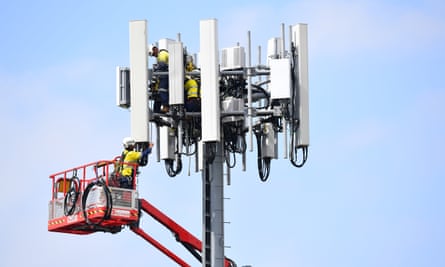What is the safest distance from the 5G cell Tower system?

If you've ever been through a city you might have noticed tiny 5G cell towers on the poles of street lights. safe distance from cell tower appear like tiny boxes, but they're actually broadcasting wireless signals from mobile providers to your phone.
These smaller towers are replacing the larger, purpose-built cell towers. While they're not as noticeable but they can still create problems for those who live nearby.
It is the Federal Communications Commission's Radiation Exposure Thresholds
The FCC's Radiation Exposure Thresholds establish the maximum amount of time a person can be exposed to electromagnetic energy generated by wireless devices. The limits for exposure are based upon scientific research that show that RF energy could be harmful to human health.
The absorption rate specific (SAR) is an indication of the amount of radiofrequency energy absorbed by tissue. It's typically 1.6 Watts per kilogram calculated over one kilogram of tissue.
Since 5g is able to transmit at higher frequencies and has the potential to cause greater energy intensity on the skin as well as other body areas. This can result in a wide range of possible harms, such as an increase in appearance of skin disorders like dermatitis, skin cancer and cataracts.
Due to the possible severe effects of 5g radiation, PSU has chosen to create a general power density limit of 4 mW/cm2 based on the average on 1cm2, and not exceeding 30 minutes for the entire 5G spectrum at 3000 GHz. This localized limit is consistent with the maximum SAR that is spatially averaged at 1.6 W/kg, averaged over one g of tissue at 6 GHz.
The FCC's Maximum Exposure Thresholds for Maximum Exposure
Have you ever used a cell phone, then you've probably realized that a safe range from the tower should be at least 400 meters. This is because the power of transmission from a cell tower increases dramatically the further away you are from it.
Although this may sound like something that's good but the truth is that people living in close proximity to towers might be more prone to health problems. For example, a study from 2014 in India found that residents living within 50 meters from cell towers suffered significantly more health complaints than those living further far from antennas.
However, this study also found that people who moved to areas that were further from cell towers experienced their symptoms improve within a few days. Studies have also revealed that exposure to high frequencies of radiofrequency electromagnetic fields (EMFs) could cause brain tumors, cancers, and other health problems.
This is because radiofrequency radiation, used in wireless communication can penetrate the human body's outer layer, the skin. This is vital to be aware of because the skin serves as a protective barrier against injuries caused by mechanical forces, infections caused by pathogenic microorganisms and infiltration of toxic substances. The skin is the most important organ of the human body. It is responsible for maintaining the integrity of other organs.
safe distance from cell tower for the Minimum Exposure
The FCC's Minimum Exposure Thresholds are based on many assumptions that aren't supported by evidence from science. This includes the false belief that exposures to RF radiations are not harmful because of the minimal absorption into body (i.e. the heating of tissues).

This also overlooks the deeper penetration of the ELF parts of the modulated RF signal as well as the consequences on the body of short bursts generated by RF waves that are pulsed. These theories are not compatible with the current understanding of biological effects of RF radiation. As such they shouldn't be considered for health protection exposure standards.
Furthermore there is the fact that both ICNIRP and FCC restrict their maximum exposure limits to local peak SARs that are based on the peak speed of spatial absorption (psSAR) that is not a reliable dosimetric instrument for determining the level of radiation exposure. Particularly what is a safe distance from a cell tower is inconclusive for frequencies that exceed 6 GHz. In addition, psSAR is not been tested for RF radiation with co-exposure to other environmental agents , such as sunlight. The interactions of RF radiation and other environmental agents may result in antagonistic or synergistic results. This would result in an increased risk of adverse health adverse effects. For example, exposure to RF radiation and sunlight could increase the risk of skin cancer and exacerbate other skin diseases such as acne.
